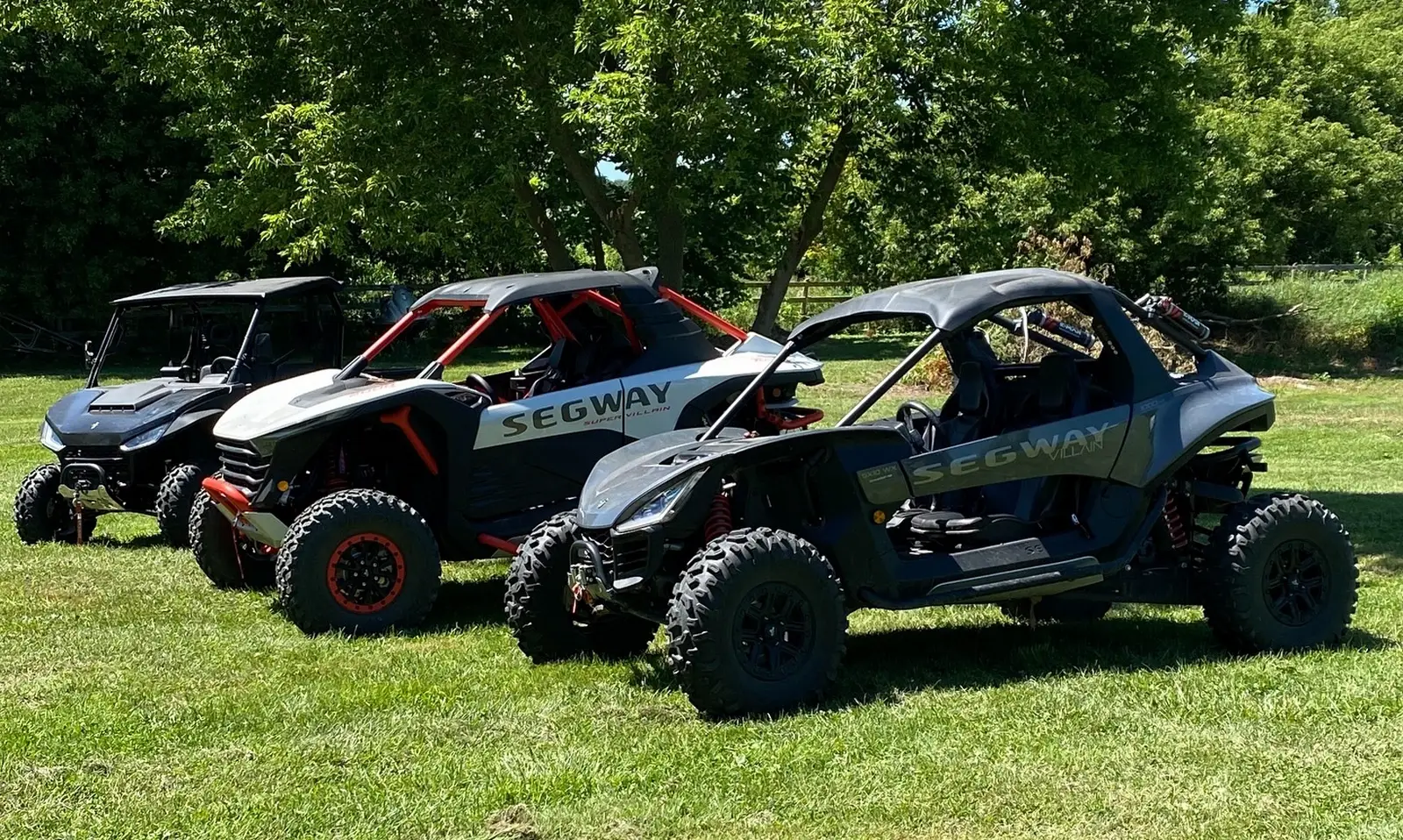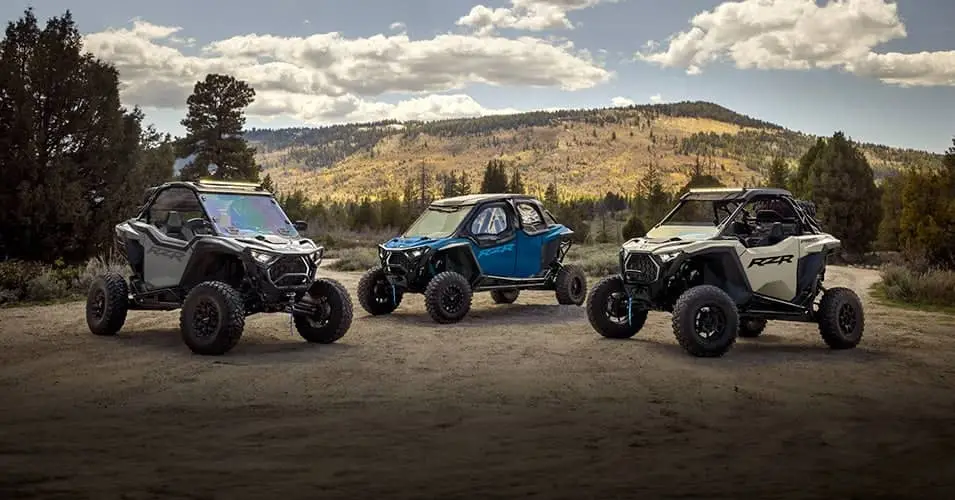Table of contents
ToggleAre renewable energies the future of motorization? In recent years, alternatives to fossil fuels have garnered significant attention. As the effects of climate change become increasingly apparent and the 2035 deadline rapidly approaches in the automotive sector, new technologies are emerging worldwide.
It is crucial to note that many countries will ban the sale of gasoline and diesel internal combustion engine cars by 2035. It is undeniable that similar restrictions for off-road vehicles will likely follow. This deadline is prompting quad manufacturers to offer viable alternatives to secure the future of our sport.
In the automotive industry, Tesla was a major pioneer in electric vehicles with the introduction of the Tesla Model S in 2012. This initiative was the catalyst for a movement adopted by all major players in the industry.
Initial Initiatives in the Quad World
Of course, the world of off-road vehicles, particularly quads, is not exempt from this trend. Since the introduction of the Commander E, available in 2014 and 2015, Can-Am has been working on developing its electric quads. In 2021, BRP committed to introducing at least one electric model in all its product lines by the end of 2026 (read the article here). Thus, it can be deduced that the announcement of fully electric Can-Am quad is now only a matter of months.
On its part, Polaris has already had an electric quad in its lineup since 2010. At the time, the Ranger EV offered a maximum range of 80 km and a power output of about 30 hp. In 2023, it was replaced by the Ranger XP Kinetic with a power output of 110 hp and a maximum range of 110 km (read the article here). It is not unrealistic to think that Polaris is also working on perfecting these technologies.
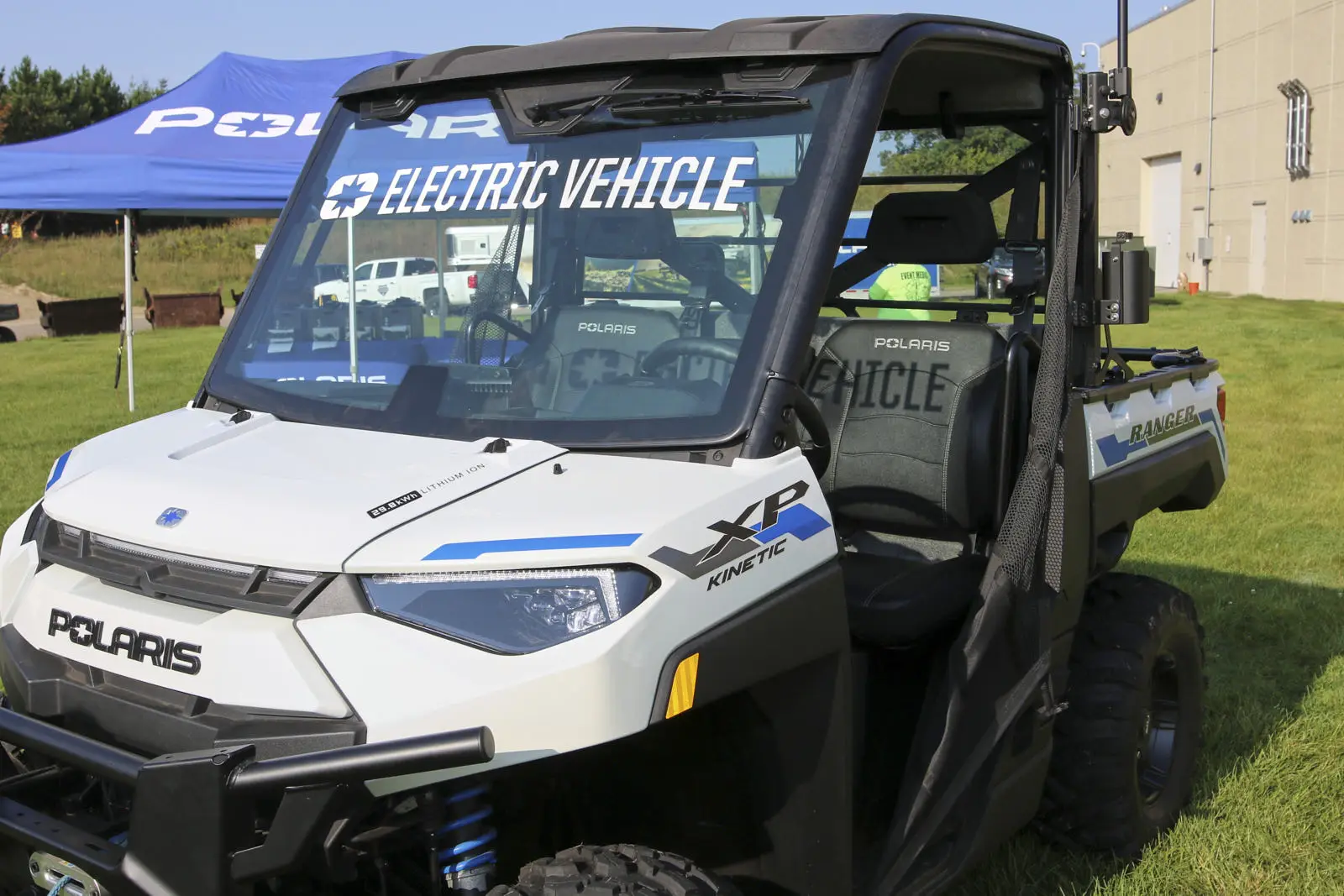
Technological and Logistical Challenges
There are two major constraints limiting the widespread integration of electric quads into manufacturers’ current offerings.
The main constraint for trail quad users is the limited range. Indeed, with a range of around 100 km in ideal conditions, access to a charging station is necessary to cover longer distances daily.
Access to charging stations represents a major logistical challenge. While charging infrastructure is developing for cars, the situation is quite different for federated trail networks. It is unrealistic to think, at least in the short or medium term, that one day charging stations will be numerous enough to cover the entire territory of quad clubs. Thus, it is reasonable to conclude that electric propulsion is not a miracle solution.
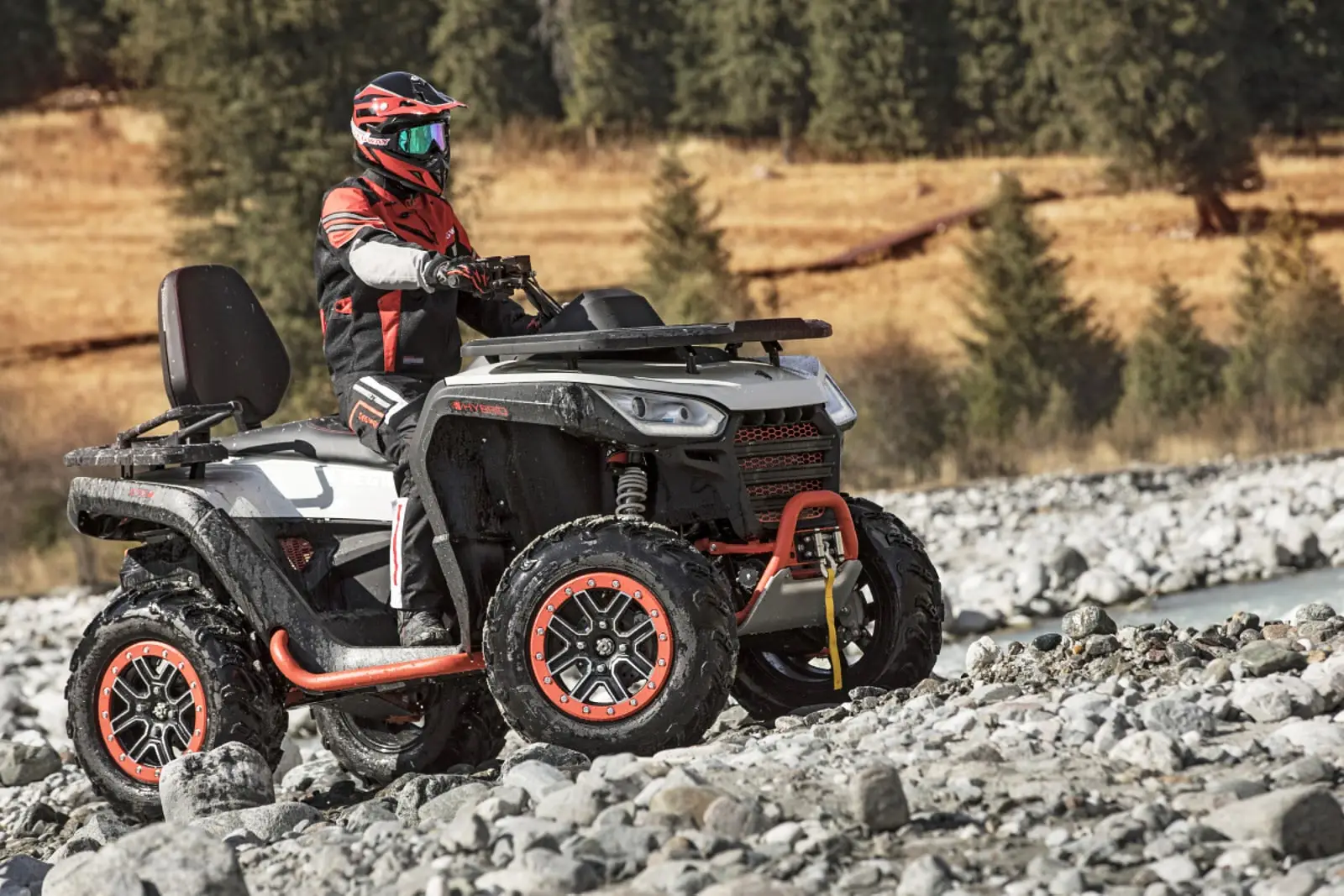
Hybrid Propulsion
At first glance, this approach seems extremely promising. It effectively combines the advantages of electric propulsion while eliminating the challenges related to its range. Of course, using a gasoline engine does not entirely eliminate emissions. However, depending on the battery capacity and range, these emissions could be significantly reduced. Moreover, the assistance provided by electric propulsion to the gasoline engine greatly reduces its consumption, thus reducing exhaust emissions.

This is the direction taken by Segway Powersports with the Super Villain SX20 Hybrid. However, this manufacturer seems to prioritize the power and performance gains offered by the gasoline-electric hybrid over emission reduction.
Even by improving the efficiency of the gasoline engine, the hybrid approach is not viable in the long term. As mentioned at the beginning of this article, this technology will need to be gradually phased out after 2035.
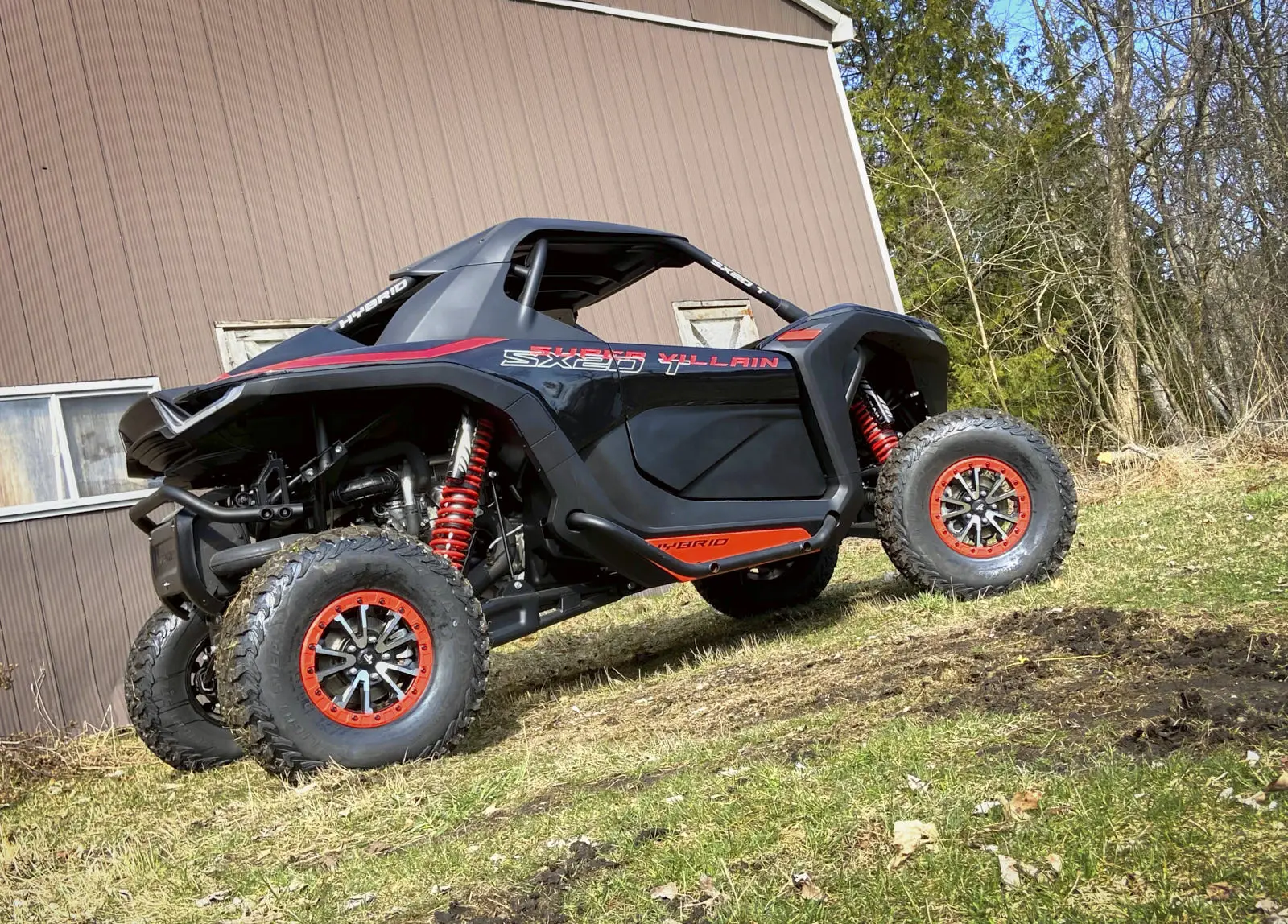
Hydrogen Propulsion
There are two main approaches to using hydrogen as a fuel. The first involves integrating a hydrogen fuel cell that converts hydrogen into electricity to power an electric motor.
The second is the use of an internal combustion engine that burns hydrogen, resulting in emissions mainly composed of water vapour.
Japanese manufacturers Kawasaki, Suzuki, Honda, and Yamaha have jointly worked on the HySE project (Hydrogen Small mobility & Engine technology). This partnership aims to develop hydrogen engines.

In less than a year of joint work, these manufacturers achieved a notable feat: an experimental vehicle based on HySE technology successfully completed the Dakar 2024 in the Mission 1000 category.
One limitation of hydrogen fuel cells is their sensitivity to freezing, which could pose challenges similar to those encountered with lithium batteries in northern climates. On the other hand, hydrogen engines require regular maintenance, just like gasoline or diesel engines.

Green Hydrogen?
Producing hydrogen requires a lot of energy. To achieve the ambitious goal of reducing or even eliminating greenhouse gas emissions, it is imperative to use green hydrogen, produced from renewable energies such as hydroelectricity, wind, and solar power. This concept may seem idealistic at first glance, but TES Canada announced a colossal $4 billion project to build a green hydrogen plant in Shawinigan, scheduled to be operational by 2028.
The required energy will be generated from three renewable sources: hydro, wind, and solar. The plant will be powered 70% by its own wind and solar farms and 30% by Hydro-Québec. This project is one of a dozen planned initiatives in Quebec for the coming years, including the anticipated establishment of a distribution and retail network.

Finally, What Does the Future Hold for Us?
This is a crucial question… For the automotive industry, fully electric propulsion seems to be here to stay for a long time. The charging station network is well developed, and vehicle range now meets the needs of many people.
In my opinion, hydrogen propulsion is an attractive solution for heavy transport, specifically for tractor-trailers on our roads. It also has the potential to become a viable alternative for automobile transport.
However, for off-road vehicles like quads, it is likely that hydrogen engines will stand out in the coming decade. Range will probably play a key role in allowing this technology to take the lead in the years to come.
Moreover, this solution seems to be the one that poses the fewest problems in terms of integration into the chassis of our quads. Indeed, a hydrogen engine is very similar to its gasoline counterpart. The vehicle’s dynamics and weight distribution should therefore be less impacted by the transition from one technology to the other.
In any case, renewable energies are increasingly considered alternatives in the industry. The coming years promise to be very interesting for people like me who are interested in technological advancements.




